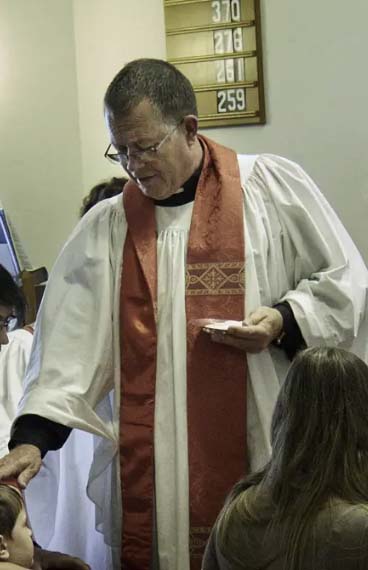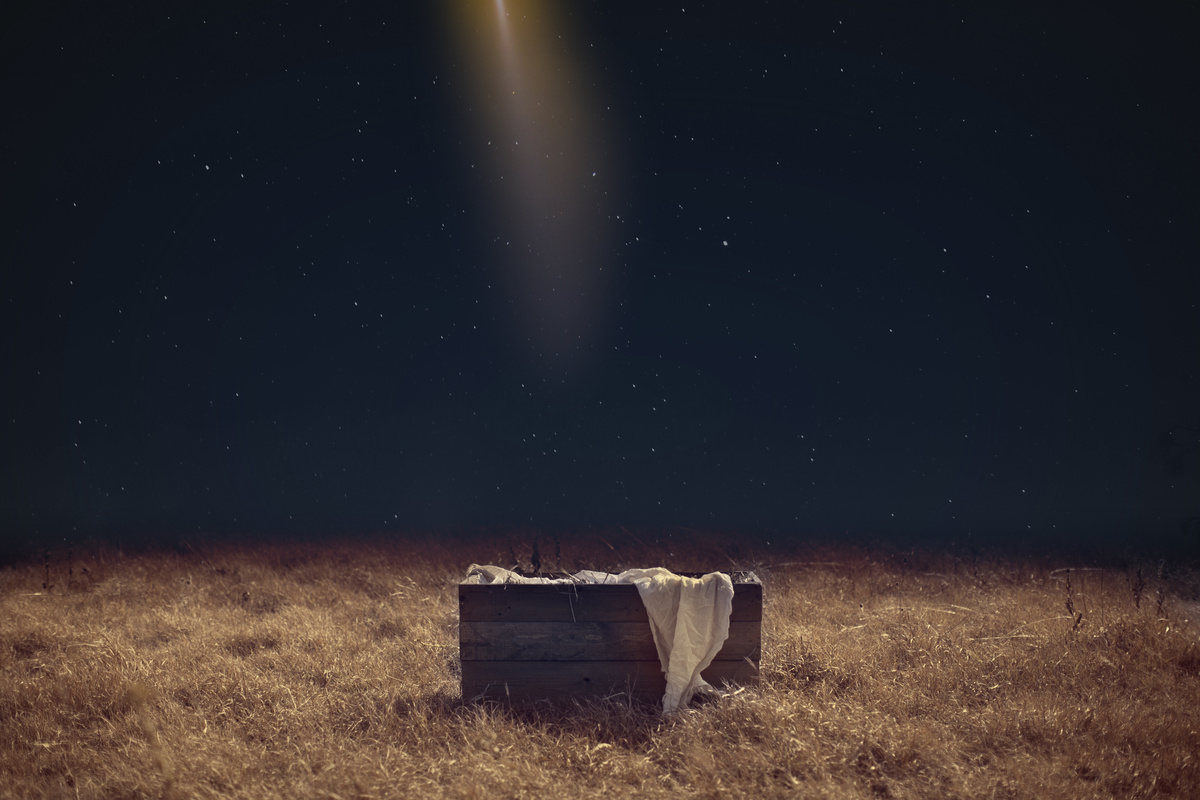While preparing this sermon on God’s throne room, I scoured the internet to find an image that would illustrate what was described in the books of Isaiah and Revelation. I couldn’t find one image that did either description justice.
I don’t know why I was surprised: how could we ever capture a picture of power and beauty and majesty? Both Isaiah and John try to express the inexpressible as they strive to capture what they had seen. Let’s explore both visions a little more in
depth.
Isaiah's Take on the Throne
Both visions record seeing God seated on His throne. Isaiah says that “His train fills the temple.” In Isaiah’s time, kings had long trains on their robes to signify their importance and status.
God’s train was so long that it filled the entire temple—a symbol of His ultimate supremacy in the universe. Sometimes we forget that it is God and God alone who is on that throne.
Atheists would have us believe that there's no throne at all, no authority we must all answer to.
Humanists would have us believe that there is a throne, but a man who sits upon it... Not God.
Isaiah tells us in no uncertain terms that there is an ultimate Authority, and He is the Triune (three in one) God.
Surrounding God’s throne are the angels called the seraphim (also called cherubim in other places in the Bible). Seraphim means “burning ones,” and Ezekiel in his vision of heaven described them as appearing like burning coals.
They had six wings, two covering their faces, two covering their feet and two to fly with. Why six wings? They needed to cover their faces because no one can survive looking at the living God. They needed two to cover their feet because nothing so humble should be brought before God. They needed two to fly to do God’s bidding.
These great burning creatures were proclaiming, “Holy, holy, holy is the Lord of hosts; the whole earth is full of his glory!” They were calling it out so loudly that the foundations of the threshold shook.
Why do they say “holy” three times? It could be because they are acknowledging each person of the Trinity:
Father, Son and Holy Spirit. Or it could emphasize God’s holiness — in Hebrew, when you repeat a word, you are adding intensity with each repetition. The seraphim stand before the Lord continually proclaiming His holiness. Smoke bellowed out as they called this over and over again.
Isaiah must have been overwhelmed!
John Adds More Detail
John, the author of the book of Revelation, adds a bit more to the description of God’s throne room. He also sees God seated on the throne, but adds, “He who sat there had the appearance of jasper and carnelian, and around the throne was
a rainbow that had the appearance of an emerald.” Carnelian is a red-orange stone that appears to be glowing from within. Jasper has a mottled appearance, usually red, brown or yellow. They are both gemstones.
The rainbow around the throne appeared like a glittering emerald. John also says that bolts of lightning and peals of thunder emanate from the throne. Now, that is a seat of power!
John numbers the seraphim to be four, one with the head of a lion, one with the head of an eagle, one with the head of a man and one with the head of an ox.
And what are the seraphim saying in John’s vision? “Holy, holy, holy, is the Lord God Almighty, who was and is and is to come!” Sounds familiar, doesn’t it? John adds that whenever the seraphim glorify the Lord, twenty-four elders fall down to worship God, casting their crowns at His feet. An awesome and terrifying spectacle, to be sure.
And Then Came Along Jesus.
How did Isaiah react to this scene before him? Terror. Stark terror and despair. He cried, “Woe is me! For I am lost.” I think that might be the reaction of any of us if we were face to face with the holiness and majesty of the King of the Universe. Even Isaiah, an exemplary human being specially chosen by God to be a prophet, felt the full weight of his sinfulness when he was in the presence of total purity.
But we can fare better than Isaiah did before God. What could we possibly have that Isaiah didn't? Jesus.
Isaiah was an Old Testament prophet working under the old covenant of the law. It was impossible for anyone to keep all of the law. God knew that when He gave it. He gave the law, not to condemn everyone, but to make them aware of just how far
short of the mark they had fallen. We needed a yardstick to measure ourselves against. Isaiah saw just how far he was from the goal of holiness and felt undone.
We, on the other hand, operate under the new covenant of grace, bought by the blood of Jesus. We don’t have to worry about being condemned by the law—Jesus paid the price for us to be freed from the death penalty that should have been
ours.
Now, don’t get me wrong. The law is still important. We still need that set of instructions to let us know when and how we’re drifting from the pilgrim path. The difference is that those lapses aren’t going to kill us.
What should our attitude be when we enter the throne room of God in prayer? Keeping in mind the visions of Isaiah and John, we should be coming before the Lord with reverence and awe, don’t you think?
Approaching the Throne of Grace
I admit that sometimes I address the Lord more as if he were my fishing buddy than Almighty God. Worse yet, sometimes I treat Him like my personal servant: Lord, do this. Lord do that.
That’s just wrong. God is our best friend, that’s true. But He’s also the One who laid the foundations of the earth, the One who spoke and created life and light. He deserves more respect when we address Him than we often give.
We should start out our prayers as Jesus instructed when He gave us the Lord’s prayer. Before we bring our list of needs and a whole lot of wants before the Lord, we need to acknowledge that, first and foremost, “hallowed be Thy name.” If we begin the dialog with a clear knowledge of God’s position in this relationship, we have a better chance of determining our own. It makes it much easier to approach the throne of grace with humility if we remember exactly who God is and who we are not.
Sometimes that’s easier said than done. Sometimes our need is great and immediate. If we see a truck that’s about to swerve into our lane and the side of our car, we won’t have time for much more than, “Help me, Lord!”
However, most of the other times, it’s just plain laziness on our part. Laziness, and maybe a little arrogance, too. So perhaps if we practice the discipline of remembering the description of God’s throne room as we pray, it will help us maintain the right
mindset for our talks with God.
Remembering the vision of God in His glory on His throne might also help us at those times when God’s answer to our prayer is “no” or “not yet.” Our hurt and disappointment over what we perceive as unanswered prayer can sometimes make us disrespectful when we talk to God about it.
If we talk to God in a way that we wouldn’t tolerate our children talking to us, then we probably need an attitude adjustment. Be honest with Him about your disappointment, certainly. But we must always treat the Lord with the honor due Him, even when we’re angry.
Remembering the awesome throne room can also help us when we’re asking God for something truly audacious. If you’re like me, sometimes you come to the Lord with some really big needs or wants.
You pray, but somewhere deep down inside, you think that God might not be up to the task, and that this prayer is too
much for Him to handle. That’s where remembering the throne room comes in. If we can keep that picture in our mind, it’s a whole lot easier to believe that our King is big enough to handle any prayer we throw His way.
There are times when I’ve come before the Lord with a huge problem that was drowning me. If I pray just about the problem at hand, I come away in just about the same place that I started. However, if I start with honoring and praising
God before I bring up the problem, I come away feeling empowered and renewed.
In fact, sometimes I’ve gotten so caught up in praising God that I’ve forgotten about that problem that seemed so big just a few minutes before. Crazy, but it works! Give it a try for yourself and see what happens!
The image of God on His throne is important to remember when the world is in turmoil. When we look around at all the conflict and uncertainty around us, it’s easy to start to worry. But above these troubling and troubled times, God is on His
throne, and the angels cry, “holy, holy, holy.” Above all the presidents and kings and tyrants that walk this earth, God is supreme and is still on His throne. There is no circumstance on this earth that is bigger than God. There is no problem that we
face that is bigger than our Savior. No one can usurp the power and authority of God. If we can hold on to that reality, then we won’t be bogged down in things that in the long run will fade away into nothingness.
God is on His throne. We need not fear. God is on His throne. We need not despair. God is on His throne, and that’s all that matters. Forever and ever. Amen.




